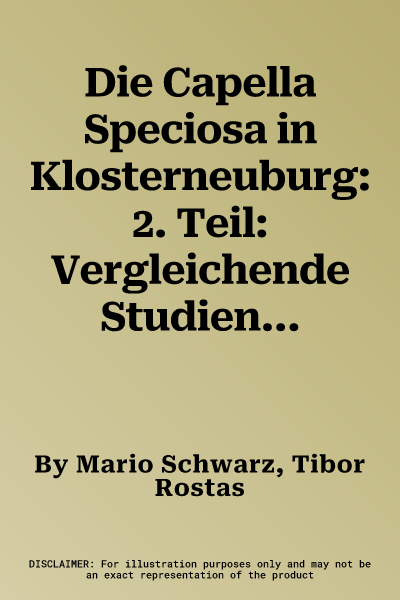Mario Schwarz
(Author)Die Capella Speciosa in Klosterneuburg: 2. Teil: Vergleichende Studien Zur Pfalzkapelle Herzog Leopolds VI. Von OsterreichPaperback, 29 July 2021


Description
English summary: The Capella Speciosa has to be seen as an exportation of the type of Gothic architecture that characterised the architecture of the royal court in France at the time. As the work of French architects, the chapel occupies a unique position within the medieval architecture of Austria. The close similarities to the choir chapels of the cathedral at Reims and the details found in the cathedral at Auxerre enable a precise dating. If we trace the development of chapels in France, we see that there was a distinct intensification of architectural narratives at that time. The veneration of relics in private devotion went from being a mere testament to scholasticism to being a mystical experience. The Capella Speciosa thus has to be understood in the same way as the French Saintes-Chapelles. Its refined structures, like the walkway in which relics were displayed, the exquisite nature of the building materials and the quality of the architectural sculptures combined to facilitate a more spiritual form of veneration within an all-encompassing work of art. For Duke Leopold VI, the Capella Speciosa was not only a magnificent shrine in which to house his collection of relics but was also a place in which he experienced a mystical beatific vision. In the second part of this book, French works of architecture built near the royal court in Hungary are presented, in which High Gothic forms can be discerned from as early as around 1220. Is there a connection between these central European works of architecture? What historical circumstances led to them being built? What do we know about the people who commissioned the buildings and the master builders? What do the connections between the structural elements and the details reveal? And what does the mysterious figure of Villard de Honnecort and his momentous journey to Hungary have to do with all of this? Tibor Rostas explores the subject in nine chapters, taking a variety of approaches. The appendix to the book contains a summary of the results of research into red marble. German description: Die Capella Speciosa ist ein Export gotischer Architekturformen, wie sie die konigliche Baukunst Frankreichs dieser Zeit auszeichneten. Als Werk franzosischer Baukunstler beansprucht die Kapelle in der Architektur des Mittelalters in Osterreich eine einzigartige Stellung. Die enge Ubereinstimmung mit den Chorkapellen der Kathedrale in Reims und den Detailformen der Kathedrale von Auxerre erlauben eine prazise Einordnung. Verfolgt man die Entwicklung der Kapellen in Frankreich, so zeigt sich in dieser Zeit eine intensive Verdichtung der Bedeutungsinhalte. Die Reliquienverehrung in der Privatandacht steigert sich vom scholastischen Sachzeugnis zum mystischen Erlebnis. Damit ist die Capella Speciosa in der Art der franzosischen Saintes-Chapelles zu verstehen. Ihre raffinierten Einrichtungen, wie der Laufgang fur die Aufstellung der Reliquien, die Kostbarkeit des Baumaterials und die bildhauerische Qualitat der Bauplastik, verhalfen zu einer spirituell gesteigerten Reliquienverehrung in einem Gesamtkunstwerk. Fur Herzog Leopold VI. bildete die Capella Speciosa nicht nur einen prachtvollen Schrein fur seinen Reliquienbesitz, sondern vermittelte ihm das Erlebnis einer mystischen Gottesschau. Im zweiten Abschnitt des Bandes werden franzosische Bauten im Umfeld des ungarischen koniglichen Hofs untersucht, an welchem die Hochgotik bereits um 1220 erschienen ist. Stehen diese mitteleuropaischen Werke miteinander in Zusammenhang? Welche historischen Umstande fuhrten zu ihrer Verwirklichung? Was wissen wir uber die Auftraggeber und was uber die Meister? Was verraten die Zusammenhange der Strukturelemente und der Detailformen? Und was kann die geheimnisvolle Figur des Villard de Honnecourt und seine denkwurdige Reise nach Ungarn mit all dem zu tun haben? In neun Kapiteln untersucht Tibor Rostas den Gegenstand mit unterschiedlichen Herangehensweisen. Im Anhang des Buches steht eine Zusammenfassung der Ergebnisse der Rotmarmor-Forschung.